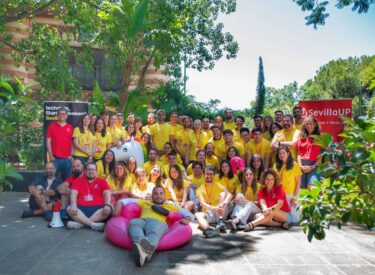Freelancers in the app world should consider alternatives to the traditional–and often burdensome–payment process.
App developers are suffering. The money they need to reinvest in ad spending is tied up in painfully long pay cycles. Respectively, Apple and Google take 60 and 45 days post-sale to send funds—despite processing payments instantaneously. The irony, of course, is that as two of the foremost leaders in software innovation, they are failing to support the same innovators who have been driving their growth.
With an average cost of $76.40 for a new user to make a single in-app-purchase across iOS and Android, and $166.22 to subscribe to a paid plan, long payment cycles are one of the main bottlenecks for developers looking to rapidly scale their growth through paid user acquisition.
It’s also important to remember that both first-time app developers as well as multimillion dollar studios suffer equally from the tension between high user acquisition costs and the lack of earnings liquidity.
Simply put, the longer developers have to wait to receive their earnings, the less they are able to generate and, as a consequence, the less that flows back into the mobile ecosystem.
Developers have several options at their disposal to tackle this problem.
1) Pushing Users to Developers’ Own Websites
The advantage of this approach is that in addition to getting paid much faster, it allows developers to avoid the 30% revenue cut that Apple and Google take. The disadvantage is that by diverting potential buyers away from the App Store and Google Play and thus adding an additional step in the conversion funnel, customers are lost along the way. Not to mention that Apple does not allow developers to bypass its own payment system, apart from a select few cases.
2) Raising Venture Capital
If successful, starting out with a considerable sum of money allows developers to scale rapidly and exponentially. Having said that, IT might take 3-6 months at minimum–if at all successful–hold developers accountable to investors, and, of course, entail selling equity in return. However, a finite sum of money presents a problem with 75%+ of your budget must be funneled back into an ongoing marketing budget.
3) Using Credit Cards
It’s easy to connect a credit card to a Facebook Ads account. Pump the money to growing your business, and if the ROI is positive, rinse and repeat. Conversely, there’s the danger of running out of money, failing to pay bills, having your credit score fall, and suffering the effects of compound interest and late fees.
4) Signing a Publisher Deal
For game developers in particular, landing a publishing deal with a big studio has always been an appealing goal. This is especially so for veteran producers with good track records who need capital to launch and promote a new title. The downside, however, is that such deals often end up costing a perpetual 50-70% in revenue sharing along with future licensing rights.
5) Financial Providers
A number of financial providers have emerged to address segments of the market that are the most affected long collection times, including FastPay, Payability, and Lighter Capital. Providing revenue-based financing to smooth cash flows for industries like digital media and software allow companies in need of ongoing capital to reinvest their earnings into growth.
Alternatives in Action
With a team made up of former and current freelancers, our theory was that a lack of access to funds is preventing small businesses and freelancers not just from paying rent, but from growing. We wanted to do more than maintain.
It turns out we were irrefutably right, regardless of how much money is made.
While providing non-developer freelancers with next-day interest-free access to earned revenues, they reported greater income security and a newfound control over financial planning. Extending the same empowering service to app developers was a natural and necessary next step.
For example, we knew a successful midcore game developer who enjoyed revenues of $75-100k a month, but despite a hugely positive ROI on marketing, his momentum was stalling because of Apple’s long pay cycle.
With alternative lending, he could reinvest every week’s earnings into paid user acquisition. Revenues tripled.
Theory proven, we brought developers into the fold of our platform. Just like artists and handymen who had turned to alternative lending, developer knew the debilitating pain points of months’ long pay cycles, turning equity over for VC funds (which required long runs), or avoiding the multi-month due diligence period, asset security, bank interests and credit demands.
We have come to learn that this is not just an issue to examine in the U.S. economy–depending on the country, some come up again the lack of Income liquidity in countries with less access to financing options.
While there was no changing Apple or Google, there was a chance to help the small businesses who employ large stables of freelancers. Those who struggled with track payments (different dates, different rates) would lose their best freelancers to competitors as a result.
The freelance economy is growing at a rapid rate, and as tech becomes a bigger part of our lives, that will surely apply to developers. But regardless of the type of work, freelancers must be empowered to control their own financial fate.











